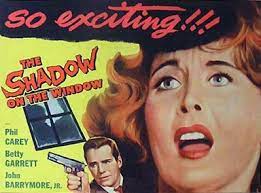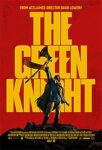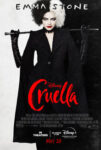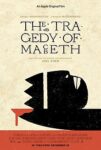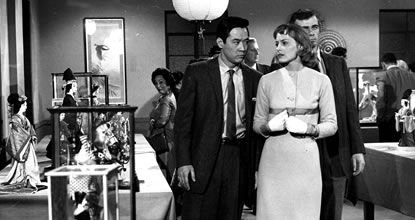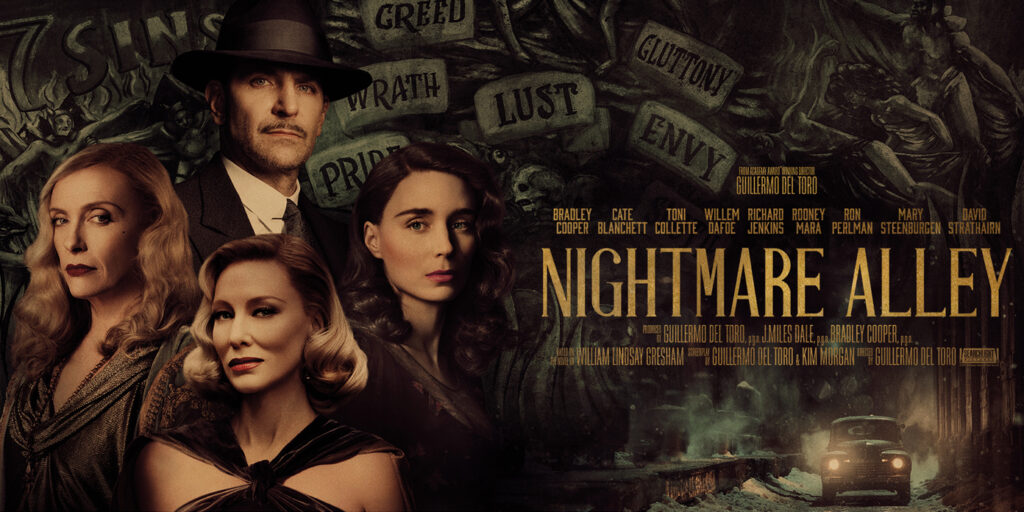Sunday night’s movie this week was another classic noir Night and The City, starring, Richard Widmark, and Gene Tierney with a standout support-role performance by Herbert Lom.
An ambitious but two-bit street con man, Harry Fabian (Widmark) dreams of making a name for himself, of becoming someone respected and admired but his life is one of running from debtors and hustling tourists for unscrupulous nightclubs that drain wallets with watered-down drinks and women hired to keep them drinking. Harry’s girlfriend Mary (Tierney) is dubious of  Harry’s constantly failing get-rich-quick schemes but remains hopelessly in love with him. A chance encounter while hustling for nightclub clients leads harry to believe that he can launch an enterprise to control wrestling entertainment in all of London while neutralizing Kristo (Lom) the organized crime figure currently behind the exhibitions. when things inevitably begin to go wrong Harry’s skills at fast-talk and quick thinking are the only factors between his success and Kristo’s vengeance.
Harry’s constantly failing get-rich-quick schemes but remains hopelessly in love with him. A chance encounter while hustling for nightclub clients leads harry to believe that he can launch an enterprise to control wrestling entertainment in all of London while neutralizing Kristo (Lom) the organized crime figure currently behind the exhibitions. when things inevitably begin to go wrong Harry’s skills at fast-talk and quick thinking are the only factors between his success and Kristo’s vengeance.
With its lack of sympathetic or moral characters, save for the ineffectual Mary, Night and The City is a perfect example of the dark, cynical tones found in true film noir. While not as depraved as Double Indemnity’s Walter Neff, Harry is a morally compromised character not unlike Squid Game’sprotagonist Gi-hun who steals from his own mother to fuel his gambling addiction. Unlike Gi-hun Harry has no redemptive arc but instead as he struggles against fate and fortune sinks ever deeper into his own immoral quicksand.
I’ve seen Richard Widmark give stellar performances and I’ve seen him ‘phone them in’ when he has no respect for the material he is in, here he is at his best form, always charming, always fully committed to the character, managing to invoke empathy for a character that in actual life it would be best to avoid. That said the standout performance to me was Herbert Lom as the respectable gangster Kristo. My principle cinematic experience with Lom has been his work with Blake Edwards in various comedies where Lom player broad exaggerated characters seeing this early turn as a nearly sociopathic heavy is quite a revelation. Kristo is a cold and precise character with only room in his heart for his beloved father and when he turns to revenge there can be no doubt that with Kristo is will be achieved.
Night and The City, while not well received upon its release has claimed its well-deserved place among the best of noirs from the classic period. The film is currently streaming on the Criterion Channel as part of their Fox Noir collection.
Please consider purchasing My SF/Noir Vulcan’s Forge which is available from Amazon and all booksellers. The novel is dark, cynical, and packed with movie references,

